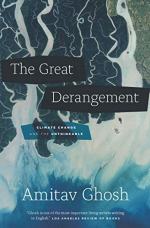|
This section contains 1,541 words (approx. 4 pages at 400 words per page) |

|
Summary
In Part I, Section 15, Ghosh notes in relation to science fiction that Mary Shelley wrote Frankenstein, one of the earliest examples of this genre, in 1816, shortly after the catastrophic volcanic eruption of Mount Tambora, which caused “several years of severe climate disruption” (66), including drought and famine, all over the world.
In Section 16, Ghosh explains that science once played a much greater role in fiction, and again poses the question of what exactly changed to cause themes like climate change and natural disasters to be relegated to the margins of science fiction.
In Section 17, Ghosh begins to answer this question by explaining the different implications and imaginative connotations of coal and oil. Coal, for instance, was at the forefront of the labor movement from the late 19th century into the mid-20th century. The harvesting of oil does not...
(read more from the Part I, Section 15 - Part II, Section 4 Summary)
|
This section contains 1,541 words (approx. 4 pages at 400 words per page) |

|




